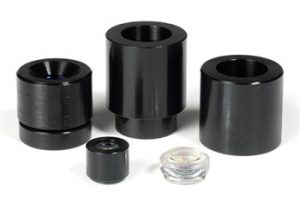High resolution lenses for machine vision — standard and custom lens design
Tunable Diode Laser Spectroscopy
High Resolution Lenses for machine vision, instrumentation, inspection and vibration-sensitive applications. Standard and custom hi-res lens assemblies.
 Measuring gaseous substances through the use of a laser is called “tunable diode laser spectroscopy.” The technology is used to measure the presence of harsh gases in the atmosphere by separating elemental subjects, methane and nitrogen, in the air and measure them through the use of the laser. The laser’s wavelengths measure and track the absorption of the elements and provide data to researchers. The characteristics of measured include the velocity of the gaseous matter, maximum influx, pressure and temperature.
Measuring gaseous substances through the use of a laser is called “tunable diode laser spectroscopy.” The technology is used to measure the presence of harsh gases in the atmosphere by separating elemental subjects, methane and nitrogen, in the air and measure them through the use of the laser. The laser’s wavelengths measure and track the absorption of the elements and provide data to researchers. The characteristics of measured include the velocity of the gaseous matter, maximum influx, pressure and temperature.
The way the tunable diode laser works is that it lets the laser from the spectroscopy draw in the medium being tested. The air will pass through the beam of the laser and the light source will modulate. The measurements in the gases and their concentrations will be measured. The technology is used by physicists and chemists and is utilized in barcode readers, measuring instruments and telecommunication devices. Tunable diode lasers are also used in laser pointers and used to measure and produce sound waves that emanate from your CD or Blu Ray player.
From home technologies to chemistry labs, diode laser spectroscopy can be incorporated into more sensitive medical functions. Laser diodes are used in non-surgical liposuction or hair removal. In liposuction the laser is used to burn fat without having to make an incision in the patient.
Although the laser diode technology is high tech, it is being used in many daily activities and functions outside of the science laboratories. With its ability to easily absorb and measure the mediums into which it is introduced (i.e. air measurements) it makes for a convenient technology for scientists and researchers. Consider that without the invention of laser diode technology you wouldn’t be able to listen to your radio as this technology gathers the sound waves and radiates them to the radio frequencies that come out of your stereo.